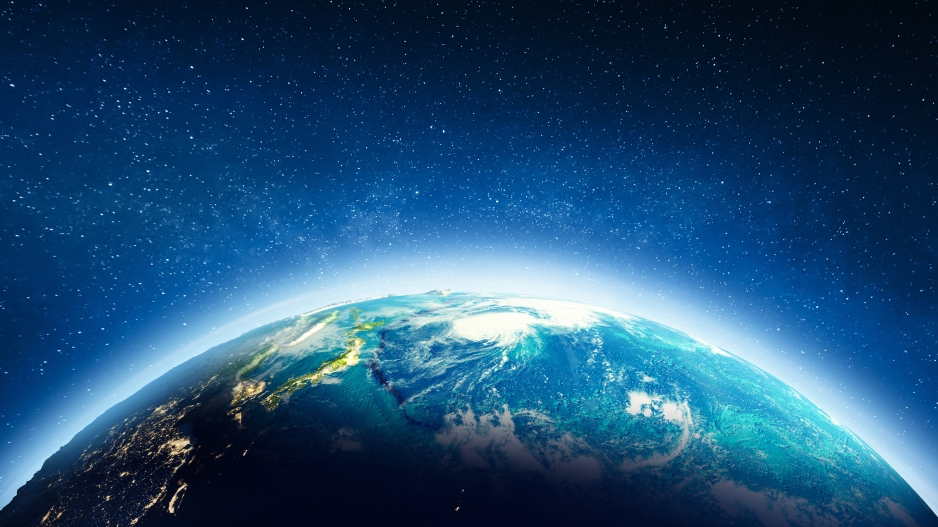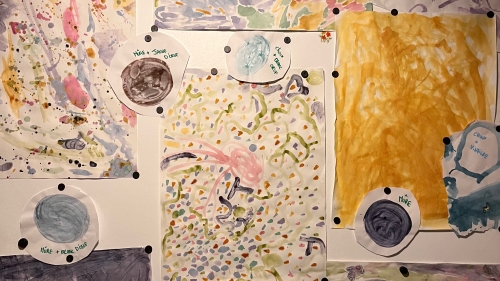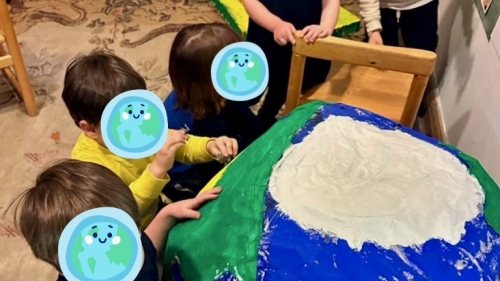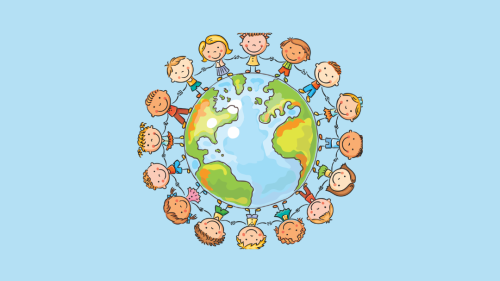
Shana DeVlieger
From the street corner where I stood in Manhattan, I would have guessed you were there, too. It felt like everyone was. Towel-necked barbershop patrons, weary-armed neighbors with overflowing grocery bags, school children with paper sun and moon crowns, even ‘finance bros,’ our necks craned upward instead of over our phones. I heard someone sigh and saw another’s shoulders lower. I followed suit. From 3:20 - 3:25 pm on April 8th, a New York minute spanned sixty full seconds instead of six. Marveling at the 2024 Total Eclipse brought us to a collective pause. It was like nothing I had experienced since moving here last year.
For a friend who drove to Vermont for the eclipse viewing, those five minutes brought tears to her eyes that still haven’t fully dried. Maybe you had a similar experience seeing the moon have its Beyoncé moment. Personally, I saw a lot of clouds. I confess that I was also taking a Zoom call from my phone (and unprepared without eclipse glasses), too. But even though it wasn’t what I showed up for, I am still convinced that I saw what I needed to see that day.
Our feet on the land of the Lenni-Lenape, our tongues sharing observations in at least five different languages about the humbling expanse above -- I saw a rare moment of unity. It wasn’t sports, religion, or music that brought us together; it was a moment of hopeful anticipation and wonder. I tried to remember the last time I felt a collective pause like this.
Frustratingly, the #unity search through my recent memories only brought up the flashes of horror, not wonder, that stopped us in our tracks this year. After all, 2023 was a historic year for billion-dollar climate-related disasters in the US. Flash 1: the apocalyptic orange sky in June. Flash 2: starting this school year in August with the sixth deadliest wildfire in US history on Maui, Hawaii; my former Aloha state students and colleagues facing the impacts of climate coloniality. Flash 3: preparing our end-of-school celebrations after months of genocide in Palestine and Sudan. Even as Earth still boasts its majesty in every newly-sprung tulip and bumble bee, the pain points in our collective history and highly visible impacts are becoming harder to ignore. And we’re not the only ones who see it. Whether or not we’re explicitly talking about it, young children know. Research by Drs. Cuartas and Yoshikawa of NYU Applied Psychology tells us that children already feel the effects of climate change-related risks.
What will next year’s #unity highlight reel show?
By 3:26 pm, I was back in the bustling city. I ended my Zoom call, dodged an oncoming delivery bike, and hustled to the library to meet my 3:30 pm tutoring client. We did fractions homework in his workbook. Then, this time, instead of talking about fractions of pizza, we stumbled through an exploration of the proportion of those most responsible for climate destruction compared to those who feel the most impact in the United States. When we meet next, on Earth Day, we plan to look at this through a global perspective, and learn from the impressive work of youth climate activists around the world and in the US. While I didn’t have the perfect words that day, and probably won’t next week either, I am glad we started somewhere. Starting somewhere felt especially urgent with each hour that passed that day.

That morning at 9:00 am, I greeted twelve preschoolers and two early childhood educators in our home-based preschool. They removed their shoes and leaned against an artwork-plastered wall, waiting their turn to wash their hands. Currently, we have displayed the pictures they made using fruit-and-vegetable-scrap-based paints (how brilliant are their teachers?!). After washing our hands, we went to work on a large paper mache globe.
While we prepared the paste and sifted through our newspaper clippings, the thought of their peers nagged at me. I considered children in Gaza sifting through the rubble of their former lives, trying to piece together any semblance of the world they once knew. I reflected on how it is that we live such different lives under the same moon and sun that we would marvel at that afternoon.

“Is it because they were naughty?” a four-year-old asked. Her words sounded like those I heard when children tried to make sense of the murders of Breonna Taylor and George Floyd nearly four years ago. We knew in theory that the pandemic ‘pause’ and the ‘summer of racial reckoning’ should just be the beginning of a lifelong recommitment to tough conversations, but reality has shown us just how important endurance is. As sure as silence won’t protect us, our conversations need to keep going.

“Why?” is a child's favorite question; yet, it’s not always the one we love fielding as adults. Maybe we don’t know. Maybe we do know and think evasion is a form of protection. Maybe we’re just now processing our own childhood growing up with Earth Day images like this: smiling white children standing on top of what they’ve been told is their divinely-granted dominion. Maybe we are in positions where our livelihoods are threatened if we discuss anything that might feel uncomfortable.
No matter what the situation, my genuine hope for myself and for others this year is a renewed commitment to more honesty, more Color, and more constructive action and accountability. In the following post, I discuss ways we might all start somewhere.
Shana DeVlieger, MAT, Ed.M, is a PhD student in Urban & Early Childhood Education in the NYU Steinhardt Department of Teaching & Learning.

